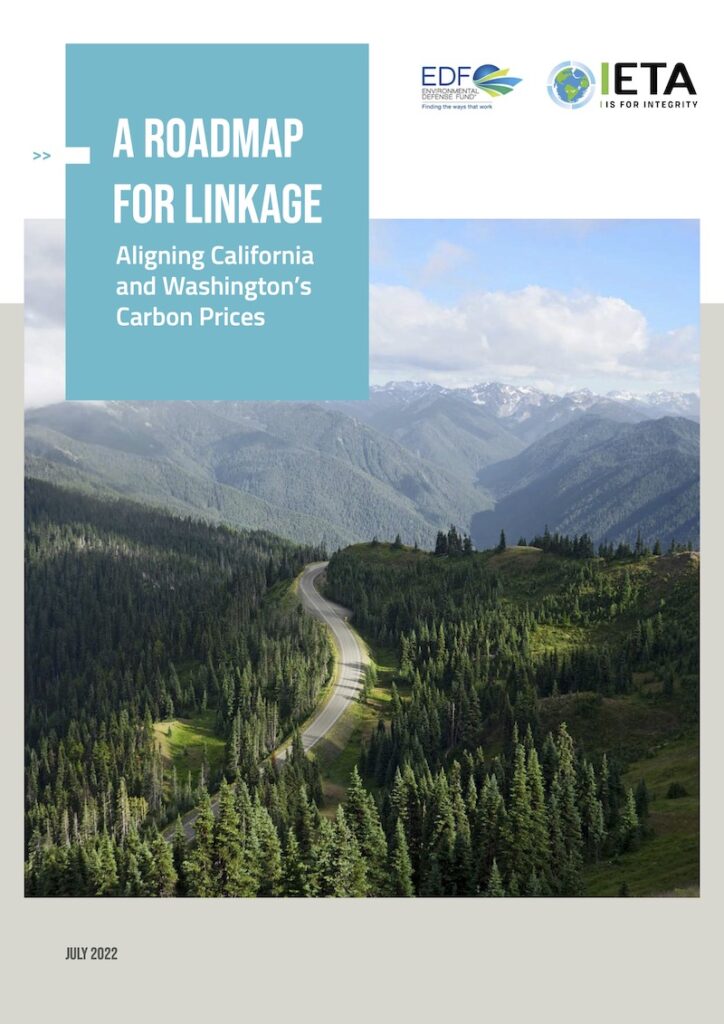Is bigger better? Are the more always the merrier?
Do economies of scale apply to carbon emissions markets?
What other benefits may come Washington’s way if the state links its carbon emissions market with the larger Western Climate Initiative marketplace that currently includes both California and Québec?
The Climate Commitment Act was designed to allow for Washington to link with other carbon markets. The Department of Ecology recently invited public input on whether connecting to other carbon markets would be beneficial to Washington. We submitted our comments for consideration last week. You can read them HERE. In brief, we believe that:
Formally linking carbon markets can bring significant short- and long-term benefits consistent with the multiple goals, aims, and requirements of the Climate Commitment Act. These benefits include program durability and stability with an aim towards interim and mid-century emissions limits, lower compliance cost via expanded opportunities for compliance, growth in the secondary market for allowances, and increased ambition across jurisdictions. By increasing confidence that auctions will avoid volatility and create more predictable, sustained revenue sources, linking presents a steady opportunity to achieve equity and close the emissions gap towards statutory climate limits. Broadening the market and compliance opportunities can and should encourage more clarity and ambition for Emissions-Intensive, Trade-Exposed (EITE) entities. A linked market reduces economic and emissions leakage risks, and provides market incentives to finance improvements since similar costs and opportunities are shared by more competitors within the same industry.
Generally, larger markets bring greater efficiencies and expanded options. Of particular interest to Washington state businesses is the prospect of lower compliance costs in a linked marketplace.
There are program-design differences in the Washington, California, and Québec carbon markets that would have to be sorted out before they could be linked, including provisions to ensure benefits accrue to vulnerable populations and overburdened communities. That’s why formal (or “hard”) linkage is unlikely prior to 2027. Another approach could be an incremental alignment (or “soft” linkage).
This analysis from cCarbon, takes a look at some of the “subtle differences” between the Washington and California markets.
 And this report from IETA and EDF, A Roadmap for Linkage, explores the relative advantages and disadvantages of formal linkage and incremental alignment.
And this report from IETA and EDF, A Roadmap for Linkage, explores the relative advantages and disadvantages of formal linkage and incremental alignment.
“As California’s program continues its evolution to address new state carbon neutrality goals and Washington’s program takes its first steps, it is critical that these jurisdictions explore ways to learn from one another and expand their collaboration. One approach is to formally link carbon pricing programs by allowing companies in each jurisdiction to buy and retire allowances from the other jurisdiction to satisfy compliance requirements. This is the approach originally conceived of by the Western Climate Initiative—to which California and Washington are both members—and it is the approach California chose to take with Quebec when they formally linked their programs in 2014.
Economists have carefully studied the benefits of formal linkage. Fundamentally, formal linkage leads to a single allowance price across all linked jurisdictions, thereby reducing total costs to final consumers without sacrificing environmental benefits. In turn, these cost reductions make it easier for regulators to achieve ambitious climate targets and lower overall cap levels.”
“A complementary approach is to pursue ‘linkage by degrees’, which celebrates the incremental alignment of policy designs and implementation strategies between carbon pricing programs. Further harmonizing carbon price designs across jurisdictions allows regulators to capture a substantial portion of the economic and environmental benefits typically associated with formal linkage, without executing a formal linkage.
…incremental alignments of policy design, facilitated by the sharing of best practices and earned expertise over time, strengthen the implementation of each carbon pricing program. In addition, such “informal” linkage also smooths the path for formal linkage because program designs become more alike with progressive incremental alignment.”
The report goes on to suggest,
“A coordinated approach between California and Washington’s carbon pricing programs must move beyond the binary question of whether to formally link today. It is impractical to expect two programs that started at different times (under unique circumstances and with varying designs to reflect each states’ individual priorities) to be ready to link at the outset. A pragmatic roadmap would place formal linkage in its proper role, a longer-term objective that is best achieved through short-term alignments of program designs. This can equally be viewed as both a “no regrets” approach (since aligning program designs offers its own benefit) and as a measured strategy for maximizing the probability of a successful formal linkage.”
The report concludes,
“Washington is already incrementally aligning the design of its carbon pricing program to that of California. This coordination is not only beneficial in the short-term, but it also facilitates a long-term possibility for formal linkage and thereby large attendant benefits. This paper outlines three areas (noncompliance penalties, price ceilings, and cap setting) that must be addressed before formal linkage occurs and where California and Washington can further incrementally align their program designs. Overcoming these obstacles through consistent dialogue as well as exchange of best practices and earned expertise will be essential to successfully approaching a formal linkage.”
California’s carbon market is a decade old, and is among the largest in the world, so any benefits to Washington of market-linkage should be significant. Since California’s market is already linked to Québec’s, bringing all three into one should be both possible and prudent.
Coming up: We’ll report from our study mission to Québec, on the future – and the history – of trading between Washington and Québec.
